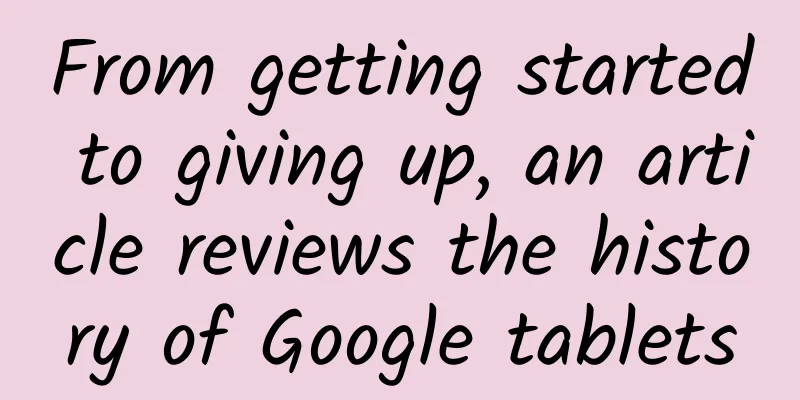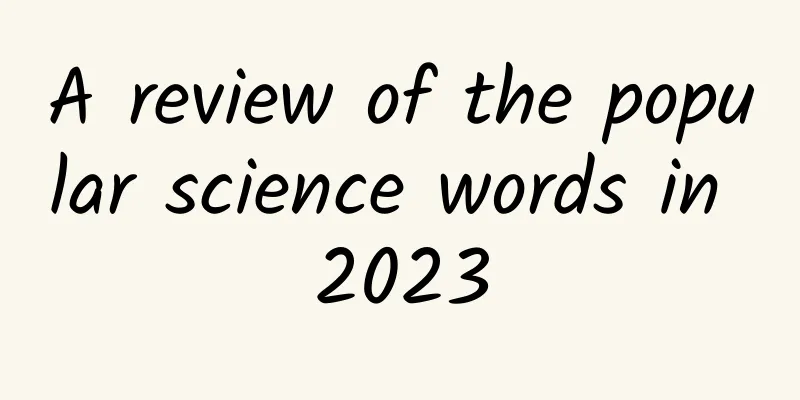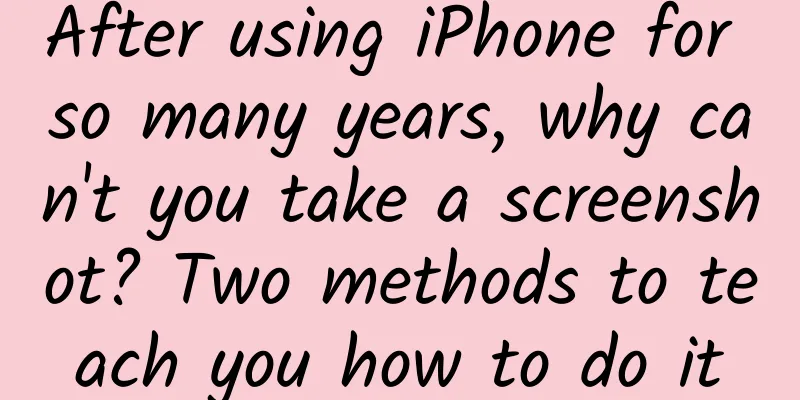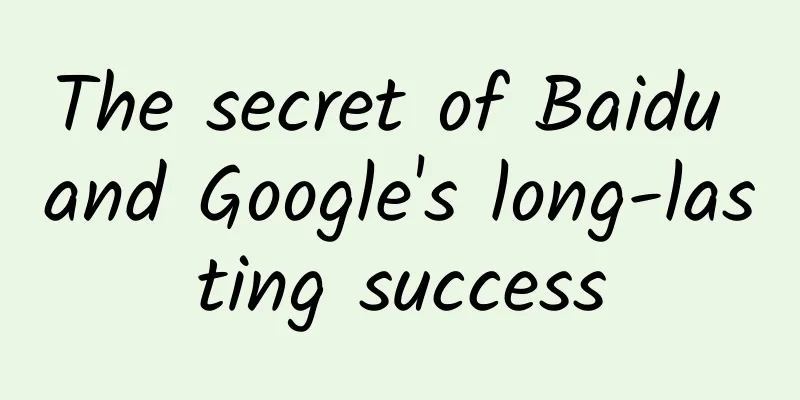From getting started to giving up, an article reviews the history of Google tablets

|
After nine years of ups and downs, Google finally announced that it would abandon its tablet computer business.
On June 21, Rick Osterloh, Google's senior vice president and head of devices and services, announced the news on his personal Twitter. He said that Google's hardware team will focus on building laptops and will continue to support other partners in developing tablets in the future. Foreign media Business Insider and Computer World confirmed that Google will no longer continue its tablet business. This is not good news for both users and Google. Considering the long time and energy Google has invested in this field, it is regrettable that it has come to this point today. Therefore, there are more doubts: Why has Google still not succeeded after so many efforts? What problems has Google encountered on this road? Are there any new opportunities in the future? With these questions in mind, let’s take a look at the successive generations of Google tablets with GeekChoice (official account GeekChoice). Perhaps the answers may be among them. Motorola Xoom Released: January 2011 The Motorola Xoom, which was unveiled at CES in January 2011, can be regarded as the first shot in the Android tablet camp. This product is also the product of Google's direct competition with Apple's iPad in tablet computers. The reason is simple. Xoom is the first tablet computer equipped with Android 3.0 Honeycomb. This new system not only has a brand new user interface for tablet computers, but also adds improved task switching and notification interfaces. Bookmark synchronization and auto-fill forms also appear for the first time. It is very distinctive compared to the iPad at the time. In terms of hardware configuration, Xoom does not belong to iPad. It has a 10.1-inch display with a resolution of 1280×800, which is much more powerful than the 9.7-inch, 1024×768 resolution of the first-generation iPad. The processor uses a 1GHz dual-core processor Nvidia Tegra 2 T20, plus 1GB RAM and 32GB ROM, which was a very powerful hardware configuration at the time. Motorola Xoom received a lot of positive reviews from the media for its efforts in software and hardware, and also showed people Google's determination in the tablet system. However, due to its high price ($799, compared to $499 for the first generation iPad) and the lack of application ecosystem at the beginning, this product was not as popular as the iPad. It only sold about 100,000 units in 6 weeks after its launch, while the first generation of Apple iPad sold 300,000 units on the first day. The successor Xoom 2 launched in November of that year also failed to create a bigger wave. In the end, Google's performance in tablet computers in 2011 was not ideal. Nexus 7 Release time: June 2012 (first generation), July 2013 (second generation) The failure of Xoom did not hinder Google's tablet dream, but instead strengthened its idea of independently making tablets. In 2012, Google began to cooperate with OEM manufacturers to create a series of exclusive brands running Android system, Google Nexus, through independent design, development and marketing. As a result, the Nexus 7 tablet jointly developed with Asus came into people's view. The number 7 in Nexus 7 does not represent the seventh generation of the product, but because its screen size is 7 inches. Google equipped it with Android 4.1 system, which not only operates more smoothly (the change of Project Butter), but also integrates the new smart assistant Google Now, which makes the overall operation feel more convenient and easier to use. The hardware used was a 1.3GHz Nvidia Tegra 3 quad-core processor, 1GB RAM with 8GB/16GB/32GB ROM, and a 7-inch 1280×800 combination, which made it perform better than many mobile phones at the time. The overall size (198.5×120×10.5mm) and weight (340g) were more portable than the iPad, so it attracted many users (iPad mini would not be launched until 5 months later). The price is what really makes users make decisions. Nexus 7 captured people with its starting price of $199 (8GB memory version), and the latest system and easy-to-use Google services further consolidated this appeal. In addition, the misaligned competition between this product and iPad finally made it proud, with sales reaching 7 million units. The subsequent second-generation Nexus 7 still maintains these fine traditions. This is actually Google's most successful product in the tablet market. Nexus 10 Released: October 2012 In addition to cooperating with ASUS to produce Nexus 7, Google also cooperated with Samsung in 2012 to launch Nexus 10. This is a 10.1-inch tablet, also equipped with Android 4.2 system, continuing Google's thinking in the Nexus brand. This product still has strong hardware configuration and the latest Android system experience. However, compared with the fourth-generation iPad released at the same time, the dual-core Exynos 5 processor used in Nexus 10 is no match for the A6X processor on the iPad. Although the resolution is higher, the Retina Display effect on the 9.7-inch iPad is excellent. Coupled with the mature iPad software ecosystem, this product did not cause much sensation. Nexus 9 Released: October 2014 Nexus 9 is probably the least noticeable tablet computer from Google. Unlike Apple, which is taking steady steps and gradually expanding its product line, Google has never insisted on a certain size. In 2014, the Nexus 9 developed in collaboration with HTC tried to be 8.9 inches, which is very close to the 9.7 inches that Apple insists on for iPad. Nexus 9 uses Nvidia Tegra K1 chip and is equipped with a combination of 2GB RAM + 16GB/32GB ROM. Its most distinctive hardware feature may be HTC's iconic BoomSound front dual speakers, but this product is far behind the iPad Air 2 launched that year. First of all, with the approximate weight of Nexus 9 (425g) and iPad Air 2 (437g), the thickness of iPad Air 2 (6.1mm) is 1.85mm less than that of Nexus 9 (7.95mm). At the same time, the better screen and more powerful A8X chip make Apple's device attractive enough. Although iPad Air 2 is $100 more expensive, the gap between the two is already apparent. Although Android 5.0 installed by Google on Nexus 9 has many changes compared to iOS 10 launched by Apple, it is obvious that in terms of tablet computer software ecology, Google's gap has been widened again. Pixel C Released: September 2015 Google changed its mindset again on tablets with the launch of Pixel C in 2015. The upgrade from Nexus to Pixel and the official announcement of no more Nexus products meant that the product style of the Nexus era, which pursued cost-effectiveness, was discontinued and replaced by a high-end, more design-oriented product approach, and so we saw Pixel C. Pixel C was once called the most powerful Android tablet by some users at the time. It changed the plastic body of the previous Nexus tablet and added metal materials to increase the quality and make it more like Apple. The 10.2-inch screen with a resolution of 2560×1800 and the Nvidia Tegra X1 octa-core chip with a main frequency of 1.9GHz made this tablet feel like a "flagship". While Microsoft's Suraface series and Apple's iPad Pro series both support keyboards, Google also equipped it with an external keyboard. Therefore, Pixel C is also a product that Google has changed the direction of tablets. However, Google did not make corresponding adjustments in terms of the system. The Pixel C was equipped with the latest Android 6.0 Marshmallow system at the time, but it did not show any obvious features in tablet mode. It was neither as good as the increasingly mature tablet mode of the Suraface series nor as good as its own Chrome OS system. All these made this device have good hardware but no place to use it. Pixel Slate Release time: October 2018 With the gradual maturity of the Chrome OS system and the design language of the Pixel product as a whole, Google finally launched the upgraded product of Pixel C in 2018 after a lapse of three years. This is the Pixel Slate. Unlike the previous generation Pixel C, which has a more obvious "borrowing" design concept, the Pixel Slate shows the overall design language of the Pixel series, whether it is the back material of the tablet or the design of the external keyboard, it is more friendly. This product itself is also compatible with both Chrome OS and Android systems, so the scope of use is expanded. Pixel Slate also began to focus on experience in hardware configuration. It is equipped with Intel Core series processors, a larger screen and resolution, and stereo dual speakers to bring a good experience in daily work and entertainment. It is also equipped with a Titan M security chip to better keep user information safe. But despite this, the Pixel Slate is still not as powerful as the iPad Pro that Apple launched in 2018. Apple not only added the A12X processor and Face ID to the iPad Pro, but also moved further towards productivity tools at the system level. The new generation of Apple Pencil is also powerful, which makes it difficult for the Pixel Slate to catch up. When Apple released the first generation of iPad in April 2010, tablet computers, a new category between laptop computers and mobile phones, appeared before everyone. Better audio and video performance and simpler controllability made it an advantage in daily entertainment, and its low price compared to laptop computers allowed it to enter ordinary people's homes and become a device suitable for all ages. These advantages allowed Apple to quickly open up the market and also let other companies see a blue ocean. Google joined the competition and started its own tablet road. But from Xoom to Pixel Slate, from ambition to eventual abandonment, Google's progress in tablet computers has always been some distance away from Apple. The gradual lag in configuration and ecology is not accidental. The tablet ecosystem of software and hardware collaboration established by Apple, as well as the gradually diversified product lines, plus products covering different price ranges, have cultivated a sufficiently loyal user base, and the huge user base in turn has pushed Apple to move forward. No matter how hard Google tries now, it cannot overcome this point. This may be the real reason why Google gave up its tablet business. Google often decisively abandons businesses that are doomed to fail. Giving up the tablet business is just like giving up Google Reader or Google+ before. It is just a normal operation, but this change may give other competitors opportunities. If Google falls, other manufacturers will continue to move forward. It's a pity that Google, which got up early, still couldn't catch up with this latecomer. |
Recommend
Nature released the "Top Ten Scientists of 2022", and Peking University's Cao Yunlong was on the list for "tracking the evolution of the new coronavirus"
Nature Cover The pictures and characters in this ...
Suzhou Restaurant Kitchen Mini Program investment price inquiry, how much is the Suzhou Restaurant Kitchen Mini Program investment price?
The advantages of WeChat mini program investment ...
Black hat SEO teaching video: Black hat SEO technical practical training video free online download!
When we are doing website SEO optimization, we al...
Baked purple potatoes explode! Do you know the "explosive temper" of these electrical appliances?
Audit expert: Luo Huiqian Associate Researcher, I...
Some works of the first 51CTO Developer Competition have been revealed, waiting for you to add to it!
/* Live to change the world Here, every work may ...
In order to conduct this experiment, scientists actually kept people awake for 88 hours!
In order to conduct this experiment, scientists a...
Can this much-hyped supplement really make your hair darker?
gossip “Taking tyrosine supplements can really ma...
When the sound environment reaches this standard, the ears feel comfortable.
Produced by: Science Popularization China Produce...
How to sell goods through Douyin live streaming? 70 notes!
This is the information I collect on a daily basi...
From 0 to 1, how does a new brand cold start on Bilibili?
With more than 200 million young users, from the ...
Ultra-high definition and scene segmentation become new trends in the TV industry, Samsung leads innovation with its industry chain advantages
Thanks to the advancement of technology, televisi...
Analysis of viral fan-attracting strategies in fission activities
When doing private domain business, how to acquir...
Hitachi and Panasonic increase investment in autonomous driving technology and enter the automotive field
According to a recent report by Nikkei, Hitachi a...
Is it reliable to determine parent-child relationship based on blood type? Why is it so difficult to determine parent-child relationship based on blood type?
Audit expert: Jin Tao Chief Physician of Hematolo...
How to master Internet social marketing in a systematic and efficient way?
A successful topic marketing is both simple and c...









